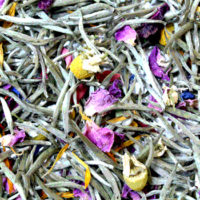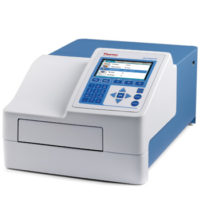Will revelations of radioactive contamination, product recalls and recrimination haunt the Japanese tea industry for years to come? At the recent World Tea Expo, held June 24–26 in Las Vegas, a panel of Japanese tea growers, importers and tea wholesalers met to discuss “Japanese Tea: Plan B.” Their manner conveyed measured calm as they reassured tea retailers of the steps taken to safeguard customers from radioactive particles detected in the air, groundwater and sea following the March 2011 quake and tsunami.
Panelists acknowledged levels of radioactive cesium in some shipments of Japanese green tea. They explained that the Japanese government has erred on the conservative side of safety, allowing only tea that meets its strict requirements to come to market.
Panelists included Nozomu (Nez) Tokugawa, an importer, wholesaler and retailer of his company, Chado-En, and founding director of the nonprofit The Wellness Gardens; Rona Tison, senior vice president, corporate relations, at tea company ITO EN (North America) Inc.; Yoshiyuki Ogata, adviser and new product development leader for Kagoshima Seicha, president of the Wellness Research Institute and chairman of Kagoshima Healthcare Instructor’s Association; Mitsushi Orita, who worked and lived in Fukushima for many years, who is responsible for sales for Orita-En tea company and has been farming using organic methods since 1965; and Yasuharu Matsumoto, representing the International Tea Farm Alliance, Soraku-gun, Kyoto.
Tokugawa assured the audience that Japan, with a long-term vision of tea industry sustainability, opts to keep tea off the market if there is any question of contamination. Orita clarified that Japanese tea manufacturers would continue to provide certificates of origin for their teas rather than certificates of insurance of safety. Therefore, consumers can know where their tea originates and whether they want to buy from that particular region.
Both Matsumoto and Ogata told the audience that the problem exists in small parts of the country. Not all green tea producers are affected, and the contamination is held to small pockets of the Japanese countryside. In addition, the span between many green tea production areas and the nuclear accident on the east side of Japan is as great as 3,000 miles in some cases—about the distance from New York to California.
Japan destroys any food products emitting more than 500 bq/kg, while the U.S. Food and Drug Administration permits up to 1,200 bq/kg of cesium in food products. A becquerel (bq) is a very small unit of radioactivity.
One Japanese agricultural ministry official, concerned that the threshold would result in the destruction of many tons of tea, told reporters from the Yomiuri Shimbun newspaper that “the 500-becquerel limit is too strict.”
“Even though tea leaves aren’t supposed to be eaten raw, they’re subject to the same limit as vegetables,” he said.
The debate boils down to whether high readings in fresh leaves will lead to harmful levels in the drink itself. Drying four pounds of fresh leaves to produce one pound of dried leaves concentrates the radioactive material between four and five times. Dried leaves, tested in Minamiashigara, were found to contain 3,000 bq/kg cesium. However, many of these radioactive particles are never ingested as they remain in the leaves after steeping.
For comparison, the international safety standard for radioactive cesium in water is 200 bq/L. Agriculture ministry officials maintain that radioactive materials are diluted between 1-to-30 and 1-to-45 when using minimally processed leaves and by one-sixth to one-ninth in tea made from fresh leaves. Tea drinkers typically use four grams to make 160 mL of tea. “Early data in cup suggests less than 10 percent is getting into the tea, but that is a hypothesis, not necessarily a like-for-like analysis,” advised London-based beverage and food scientist Dr. Andrew Scott. He notes that it is common in Asia to drink tea leaves brewed more than once.
Japan’s radiation limits are below the 1,000 bq/kg threshold for cesium permitted in the Food and Agricultural Organization and World Health Organization’s Codex Alimentarius. The food safety guidelines were updated May 2 for nuclear emergencies.
In a similar situation, following the 1986 explosion and meltdown of the Chernobyl reactors in the Soviet Union, samples from tea gardens in Turkey and Georgia tested between 25,000 and 89,000 bq/kg. Cay-Kur, Turkey’s national tea company, buried 58,000 tons of badly contaminated teas and simply blended the remainder with the previous year’s crop to arrive at an average 12,500 bq/kg reading. At that time, less was known about the hazards of foodborne radionuclides. Subsequent experiments showed that 60 percent of the radiation was transferred to the liquor from contaminated leaves.
Tison shared with audience members the thorough and consistent testing that ITO EN tea undergoes—from the farm through to manufacturing processes, including daily monitoring for radioactive material/measurements around co-packing plants within 200 miles of the Tohoku and Kanto regions. She also related to the gathering a recent CNN report that illustrated how much tea would have to be consumed for a consumer to experience toxic levels of radiation: an amount equal to 200 bottles of ready-to-drink tea or three pounds of tea per day for a year. It was a reminder to keep the situation in perspective.
At the World Tea Expo session, retailers and tea companies were encouraged to learn the geography and clarify with their customers where their particular Japanese tea is grown. Education is the theme. Know what is happening and share this with customers. As one audience member pointed out, a big part of the problem is responding to consumer perception, more so than the parsing of the facts of radioactive contamination.
On learning of the contamination, retailer Steven Sartini, La Teiera Eclettica in Milan, Italy, expressed frustration. “I now have no arguments to use when the ever-increasing numbers of customers declare they will stop consuming any tea from Japan. Some have even stated concern for Chinese teas that, as far as they’re concerned, is close enough to Japan for radioactive contamination.”
Just What Is Plan B?
Experts say the first consideration in a “Plan B” is to apply the precautionary principle: Play it safe and avoid what may cause harm to your customers, your business and reputation by sourcing and exhausting 2010 teas. Make sure you can authenticate the tea as pre-dating the March 11, 2011, earthquake.
Customers seeking this year’s harvest should first understand that Japan’s export threshold is very conservative. A lesson in geography will convince customers that green tea from the south of Japan is safe. Kagoshima is 1,650 miles from Fukushima.
Guy Munsch, owner of Zen Tara Tea near Washington, D.C., suggested, “For perspective, and for those old enough to remember, we do offer this more familiar comparison to customers about the question of distance from the Fukushima power plants and tea-growing areas: When Three Mile Island in Pennsylvania happened in the U.S., did you stop buying produce from Florida?”
When asked about the safety of Japan’s teas, businesses should be sure to provide reputable test results with lot numbers that correspond to their offerings.
Green teas from Australia, China, Korea, New Zealand, Taiwan, Thailand and even Vietnam that are cultivated with meticulous attention, using Japanese practices, equipment and Japan-trained processing staff, are a satisfying and safe alternative to Japanese green teas. Companies may use the opportunity to bring to light the green tea gems of Asia, Assam, Darjeeling and Nepal.
The most critical element of a “Plan B” is to not give up faith that Japan’s magnificent teas will remain available to the world. This crisis will eventually pass.
Indeed, the situation should also give rise to serious research into the actual harm that can be done drinking what is known to be lightly contaminated tea.
Readings of 1,000 and even 500 bq/kg sound ominous, but remember the scale. No one really drinks tea by the kilogram. Exposure is slight. Greens are consumed in very small quantities and few of the cesium isotopes actually find their way into the beverage.
Important Facts to Consider
• Virtually all of Japan’s tea is grown at least 300 kilometers (186 miles) south of the radiation source. Tea grown in Kagoshima, the nation’s second-largest growing region, is on the island of Kyushu, thousands of kilometers away from Fukushima.
• The Fukushima-Daiichi nuclear plant is along Japan’s eastern seaboard. Prevailing winds blow east, pushing the fallout over the Pacific Ocean.
• Japanese inspectors test food at the source and during the manufacturing process. Japan banned the export of any food products with unusually high readings, despite the fact these readings are generally below health-damaging thresholds. The Japanese Ministry of Health, Labour and Welfare in late April banned food shipments in eight prefectures, Chiba, Fukushima, Gunma, Hokkaido, Ibaraki, Kanagawa, Niigata and Yamagata, later adding some teas from Shizuoka.
• “Analytical results for all of the samples of various vegetables, mushrooms, beef, seafood and raw unprocessed milk indicated that I-131, Cs-134 and Cs-137 were either not detected or were below the regulation values set by the Japanese authorities,” according to the International Atomic Energy
Authority.
• Processing facilities, port authorities and food inspectors in various importing countries also check for radiation. Stocks of teas that were packaged and stored distant from the fallout zone are safe.
Overall, bacterial outbreaks, like the one originating in peppermint teas shipped from Seattle, WA this spring, are far more dangerous than the current low-level contamination of tea.
For additional reference, the World Health Organization has issued some guidance on safety at www.who.int/hac/crises/jpn/faqs/en/index7.html.
Dan Bolton is a tea expert as well as publisher and editor of World Tea News, part of World Tea Media, organizers of World Tea Expo and World Tea East.
Japanese Tea: Plan B




